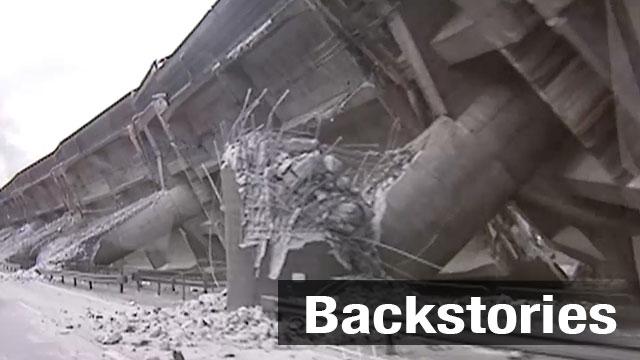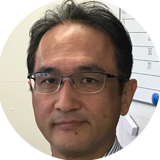An unforgettable scene
"Only a terrorist attack or an earthquake could make such a sight possible." I muttered this to myself as I looked down from a helicopter on the ruined landscape of Kobe, a city of over 1.4 million in western Japan. It was January 17th, 1995, and I was on my way from Tokyo to report on a devastating earthquake. Columns of smoke rose and amassed into a single cloud. Fires spread and far exceeded the fire department's capacity to respond.
The major tremor, later named the Great Hanshin-Awaji Earthquake, crushed the confidence – you could even say overconfidence – of the Japanese people. At the time, the country boasted the world's second largest economy and was a leading technological power. We took it for granted that measures were in place to deal with earthquakes.
But I saw the destruction firsthand. The area around the Kobe heliport was rendered useless, enveloped in muddy water from liquefaction. Roads were cut off and countless buildings had collapsed. I somehow managed to reach the city center, but the lack of electricity meant it was pitch black at night. As I walked along the fallen Hanshin Expressway, I looked around and thought this was a sight that went against everything Japan was supposed to be.
A powerful earthquake devastated the city of Kobe and its surrounding areas. More than 6,400 people were killed and 300,000 were forced to evacuate.
Watch Video: 1:44
Just two months later, the country was left stunned by an act unlike any it had experienced before. The Aum Shinrikyo religious cult attacked Tokyo's subway system with the toxic chemical sarin. I watched the breaking news reports at home before rushing to NHK. The TVs in the newsroom all showed images of people emerging from the subway and collapsing on the road. It was an unforgettable sight.
The end of a myth
Until these events, I think much of Japan lived under the assumption that our country was the safest in the world, that all our tomorrows would be peaceful and calm. Then, there was a devastating earthquake struck a big city and we realized we weren't prepared for natural disasters. And after that, a terrorist attack, and we realized we weren't immune from wars and terrorism, formerly seen as distant and foreign developments.
Ten days after the subway attack, another incident added to this atmosphere of confusion and turmoil. Unknown assailant fired shots at the chief of Japan's National Police Agency, leaving him seriously injured. The case remains unsolved and I believe it was the final nail in the coffin of the "Japan is safe" myth.
Now, earthquake experts warn us that a major tremor can happen at any moment. And we know that a populous country like ours is always at risk of terrorist attacks. After those incidents of 1995, the Japanese people realized our country wasn't standing on a stable bedrock as we had believed, but rather on quicksand that could easily sweep us away unless we stood firm.
The Aum Shinrikyo doomsday cult released deadly sarin gas in Tokyo’s subway system during the morning rush hour. 13 people were killed and about 6,300 others injured.
Watch Video: 1:02
Hope
Looking back on these events, I believe the Japanese people and society have become flexible and strong as a result. The damage caused was great, but we didn't give up hope.
I remember after the earthquake seeing streams of people headed to the affected areas. Trains weren't running and the roads were inaccessible, but nonetheless family members, acquaintances, and volunteers stoically made their way down empty railroad tracks. Their desire to help made up for the shortcomings of the administrative relief operations.
The goodwill efforts were slowly organized and local governments and NGOs banded together to form efficient volunteer systems. They spread information for survivors – evacuation center locations, food and water delivery schedules, and missing persons reports – through local community radio broadcasts and wall newspapers. This was before the internet was widely used like it is now. This groundwork has been crucial for relief work in ensuing disasters, including the Great East Japan Earthquake of 2011. All these efforts have been based off the experience of the Great Hanshin-Awaji Earthquake.
As for terrorism, the Japanese police have been successful in containing incidents since the sarin attack. As an island nation, it is perhaps easier for Japan to prevent terrorists from entering the country, but I still think the results are worthy of praise.
Watch Video: 2:04
Looking at our true selves
I believe the Heisei Era has changed how Japanese people look at themselves. During the rapid economic growth of the Showa Era, people could see a bright future. During Heisei, they were forced to take a second look at reality.
As we enter a new period of Japanese history, we face many of the same challenges as we did over the past 30 or so years. The country's security environment is becoming increasingly severe. Mega earthquakes still loom over our everyday lives. And major events like the 2020 Tokyo Olympics and Paralympics could be targeted by terrorist attacks.
But we learned during the Heisei Era to neither be optimistic or pessimistic. Everything provides lessons for the future and opportunities for reflection. I'm excited to see how our country develops going forward, and I have high hopes for the younger generation that will lead us.

